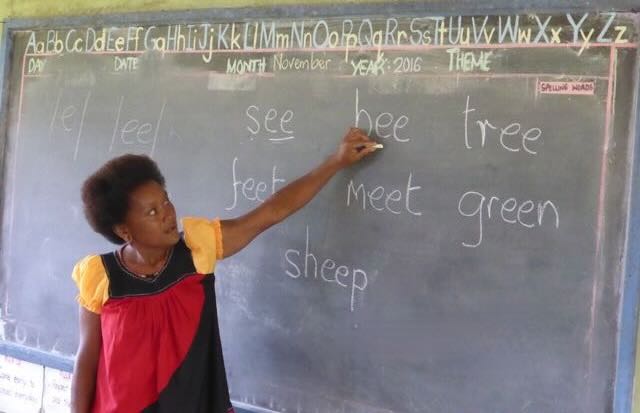This is the only Phonics program written specifically for Papua New Guinea. It is exactly in line with the NDoE Standards-Based English Syllabus for Elementary Schools.
These books teach the sounds and letters (phonemes and graphemes) listed in Annex 1 of the Standards-Based Syllabus. They follow exactly the sequence in which they are to be taught in Elementary Prep and Elementary / Grades 1 and 2.
Sounds and letters are taught using words and pictures that are familiar to PNG students. The activities help students to understand confusing differences between Tok Pisin and English.
The cover design is based on a traditional design used for coconut baskets. It is based on the nautilus shell, represented by the pattern of the curved line that forms a rough circle, with smaller circles inside the bigger one.
Student Book pages: Elementary Prep; Elementary / Grade 1; and Elementary / Grade 2.
Sample pages: Student Books at Elementary Prep; Elementary / Grade 1; and Elementary / Grade 2.
Sample pages from Elementary Prep Teacher Guide.
Why is phonics important? Phonics teaches the sounds that letters make. Good readers know the sounds that each letter (or group of letters) can represent. Students who do not understand the link between letters and sounds are disadvantaged.
